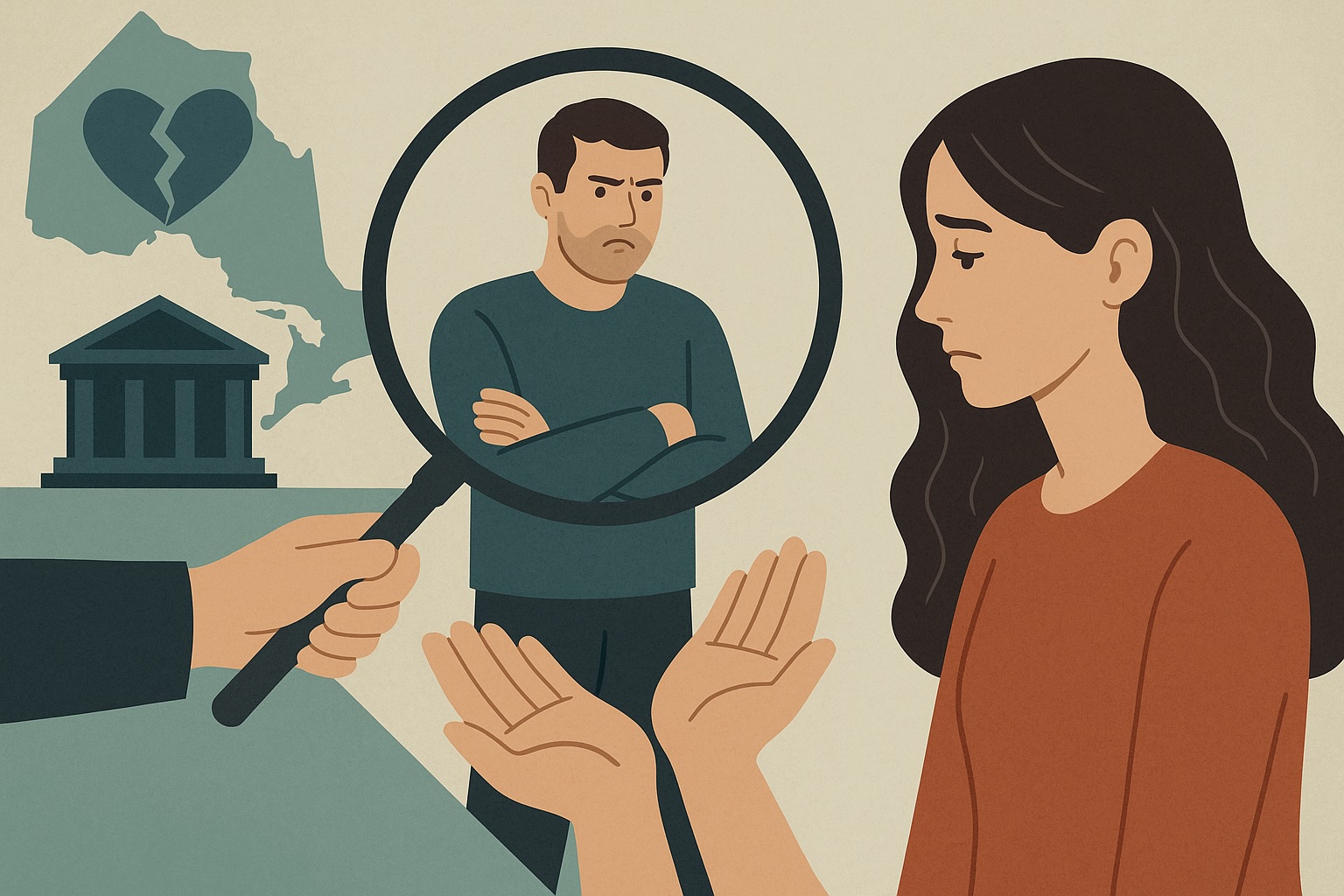Clare’s Law in Ontario: Missed Opportunity or Necessary Protection?
Ontario defeated Bill 274 (Clare’s Law) in 2021, missing a chance to give survivors early warnings about abusive partners. With IPV rates rising and 95 municipalities declaring violence an epidemic, is it time to revisit Clare’s Law?

In 2021, Ontario MPP Jennie Stevens introduced Bill 274: The Intimate Partner Violence Disclosure Act, modeled after the UK’s Clare’s Law.
The bill would have allowed individuals to ask police whether their partner had a history of abuse — providing a critical early warning tool before violence escalated.
But the bill was defeated. And with intimate partner violence (IPV) rates rising across Ontario, the debate over Clare’s Law has resurfaced — especially as more than 95 municipalities have declared IPV an epidemic.
What Is Clare’s Law?
Clare’s Law was created in the UK after the tragic murder of Clare Wood, killed by a partner with a violent past she never knew about.
The law gives:
Police discretion to disclose an individual’s violent history to a partner.
Survivors and individuals the right to request information proactively.
Communities a pathway for early intervention and prevention.
Since then, Alberta and Saskatchewan have adopted versions of Clare’s Law, and survivors there have used it to exit unsafe relationships earlier.
Why Ontario Considered Clare’s Law
Ontario’s proposed Bill 274 had three key goals:
Empower Individuals → Survivors and those entering relationships could make informed choices about safety.
Strengthen Prevention → Disclosures could prevent violence from escalating before tragedy struck.
Encourage Collaboration → The bill envisioned closer partnerships between police, survivor advocates, and community organizations.
Advocates saw this as a chance to shift resources from crisis response to early intervention.
The Pushback: Why Critics Opposed It
Not everyone supported Clare’s Law. Critics raised three big concerns:
Privacy and Civil Liberties
Disclosing someone’s past could violate privacy rights.
Legal experts questioned whether safeguards against misuse were strong enough.
Safety Risks for Survivors
Knowledge alone doesn’t create safety.
Without housing, counseling, and legal supports, survivors could still be trapped in dangerous situations.
Limited Effectiveness
Police records only reflect reported cases, leaving hidden abuse unrecorded.
A “clean record” might give a false sense of security.
Where Things Stand Today
Ontario defeated Bill 274, but the conversation hasn’t gone away. The numbers tell a story of urgency:
95 municipalities have declared IPV an epidemic.
62 femicides in Ontario in 2024 alone.
Shelters turning away hundreds nightly due to lack of space.
In comparison:
Alberta reports survivors using Clare’s Law to leave unsafe partners.
Saskatchewan has seen positive awareness gains, though implementation challenges remain.
Ontario has not revisited the bill — but with rising pressure, many believe it’s only a matter of time.
Why This Debate Matters
Clare’s Law forces us to confront a difficult balance:
Protection vs. Privacy
Prevention vs. Crisis Response
Supporters see it as a life-saving tool. Critics warn it’s incomplete without the shelters, legal aid, and financial supports survivors desperately need.
For Ontario, the real challenge isn’t whether Clare’s Law should exist — it’s how to integrate it into a layered strategy:
Disclosure laws
Strong shelter networks
Faster court protections
Economic supports for survivors
Conclusion
By defeating Bill 274, Ontario left survivors without a tool that might have prevented harm before it began. Now, with IPV cases climbing and communities declaring it an epidemic, the pressure to reconsider Clare’s Law is growing stronger.
The question is not just should Ontario adopt it — but can Ontario afford not to?
